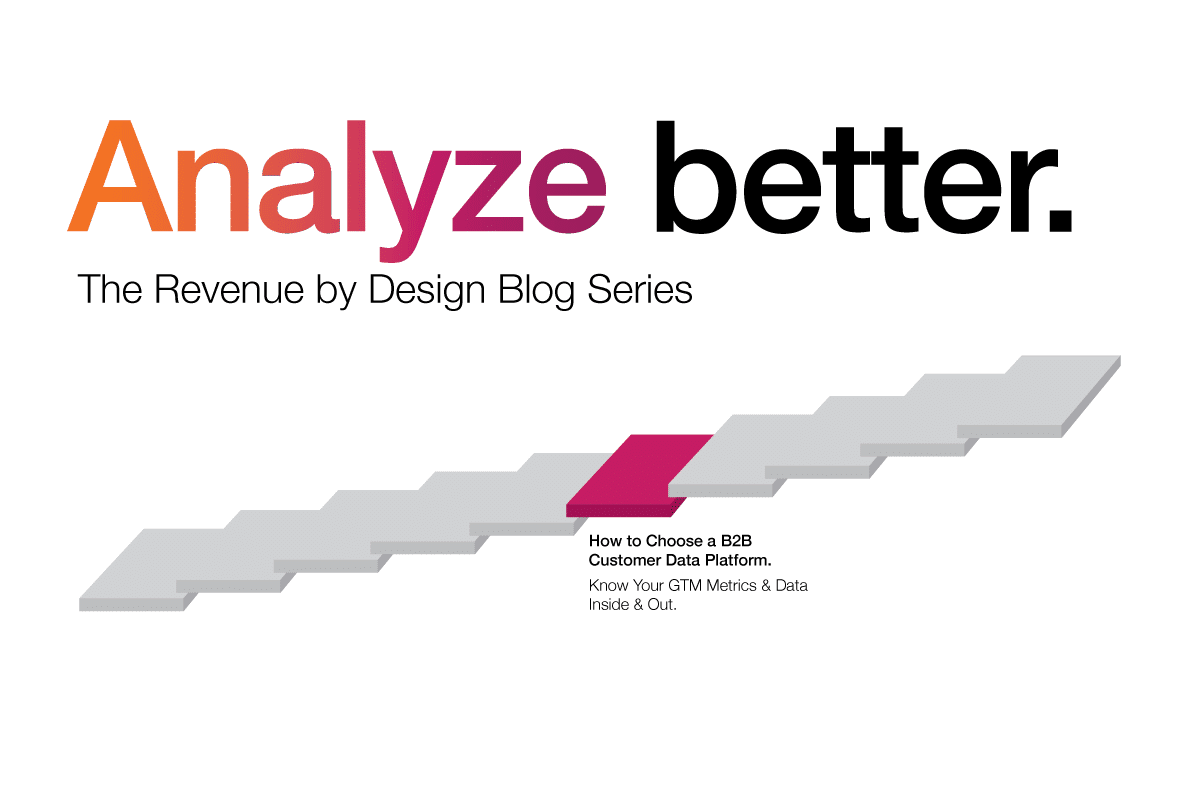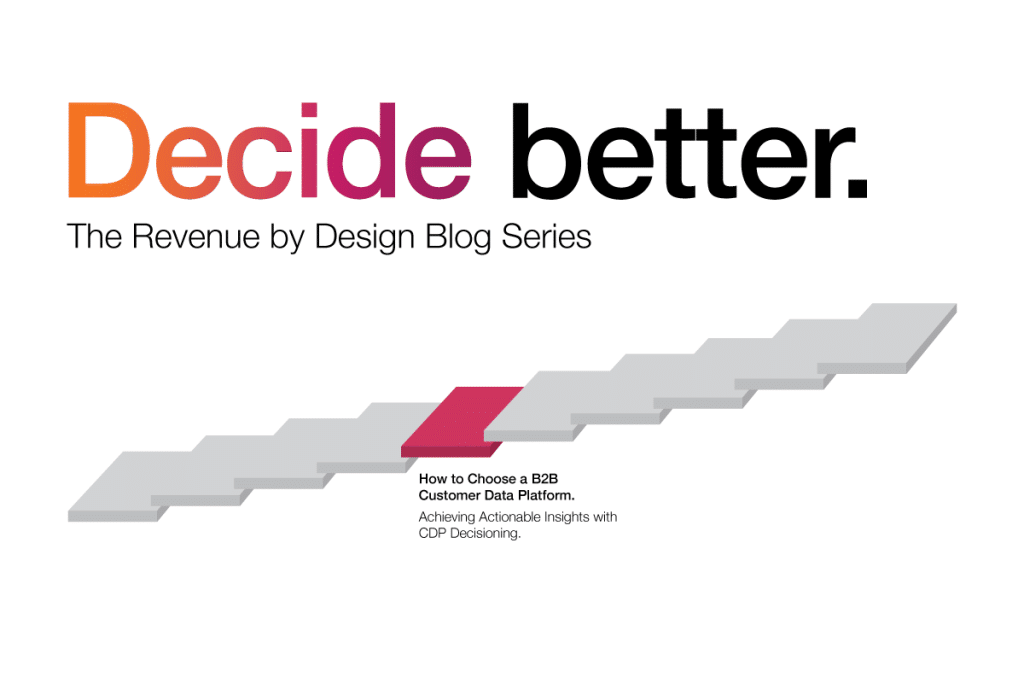Low conversion rates from campaigns, high email bounce rates, and poor pipeline velocity are symptoms of a bigger problem – poor data health. Inaccurate, inconsistent, missing, or incomplete data can all negatively impact your bottom line and muddle most other sales and marketing metrics you are trying to optimize. Being able to evaluate your data’s health with analytics is critical to further optimizing its performance and downstream ROI. However, without the proper tools, attempting to explore, monitor and sort your data with applied analytics is next to impossible.
To overcome that hurdle, sales & marketing teams are implementing Customer Data Platforms (CDPs) with reporting functions to analyze and measure operational data management activities using AI — all within a user-friendly, point-and-click analytics dashboards. With a CDP, you can derive actionable insight into operational data, prioritize accounts within your Total Addressable Market, customize native reports & dashboards, apply predictive models, track data enrichment, analyze conversion rates and much, much more.
If your team is ready to implement a CDP solution, it’s important to remember that not all CDPs’ reporting capabilities are the same, so you need a way to determine which CDP best fits your needs. Consider leading research and advisory companies like Forrester, who recently published The Forrester New Wave™: B2B Standalone CDPs, Q4, 2021.
In Forrester’s evaluation of 14 leading B2B CDP companies, Forrester considers several factors to compare each CDPs reporting capabilities. Does the solution include reporting functionality to monitor, analyze, and measure operational data management activities and performance data from marketing & sales engagement? Forrester looked at each solution’s approach and metrics, and level of reporting (contact, buying group, segment, account), as well as whether the solution provides revenue attribution reporting (first-touch, last-touch, multi-touch, etc.) and if clients customize and build their own reporting. Lastly they looked at how each solution determined marketing ROI (data sources, process, etc). We’re proud to say that Forrester determined that Leadspace’s reporting capabilities are up to par! Let’s dive deeper into Leadspace’s reporting process and capabilities.
Leadspace provides several mechanisms for account and contact level reporting…
Database Health Analytics – an analytics tool that provides actionable insights into the overall health of your lead, contact and account database from an operational perspective. It delivers clear visibility into how to optimize the database on an ongoing basis. Addresses key use cases such as quantitative and qualitative DB analysis, and reactivation and cleansing recommendations.
ICP Analytics – an analytics tool that drives insights into the lead, contact, and account funnel with respect to conversion rates, by giving visibility into the factors that drive deals forward (the positives) and what doesn’t (the negatives). Provides recommendations on what areas of your business to double down on to optimize efforts going forward. Uncovers previously hidden insights about which segments of your business have potential to drive business. These reports can provide lead source (first touch attribution) conversion and revenue insights.
TAM Analytics – an analytics tool that gives you the ability to prioritize your total addressable market by applying predictive fit, intent and persona scores to the Leadspace universe of companies and people. This level of insight ensures you can proactively focus on the companies that have a higher likelihood to purchase, are in-market for a product or solution HP sells, and you can engage the right person in the organization based on what they are potentially in-market for.
CRM Reports and Dashboards – Leadspace’s REST API integration enables the ability to customize native reports and dashboards to analyze leads, contacts and accounts. Insights include: enrichment rates across leads, contacts, and accounts – lead and contact health (socially verified people, people who have moved) – identifying duplicate records – account/lead ownership conflicts – territory planning based on account firmographics and fit scoring.
Additionally, our CDP stores data in an OEM’d BI system (OLAP) which enables full BI API access where customers can choose to sync CDP data in standard databases and BI systems or data lakes (such as Snowflake and BigQuery) for their own internal reporting and analytics purposes.
To sum it all up, Leadspace empowers sales & marketing teams to heavily explore and customize a variety of analytics dashboards and derive relevant, actionable insights surrounding your Database Health, Ideal Customer Profile, Total Addressable Market, and Customer Relations Management. To learn more about the benefits of implementing a CDP, and to see how Leadspace compares to other B2B CDPs in all 10 evaluated categories (and is ranked overall in the Forrester Wave), check out The Forrester New Wave™: B2B Standalone CDPs, Q4, 2021. Filter, explore and apply predictive analytics to pursue the right leads at the right time and accelerate close rates with Leadspace’s B2B CDP solution.
If any of this interests you, contact us here.



